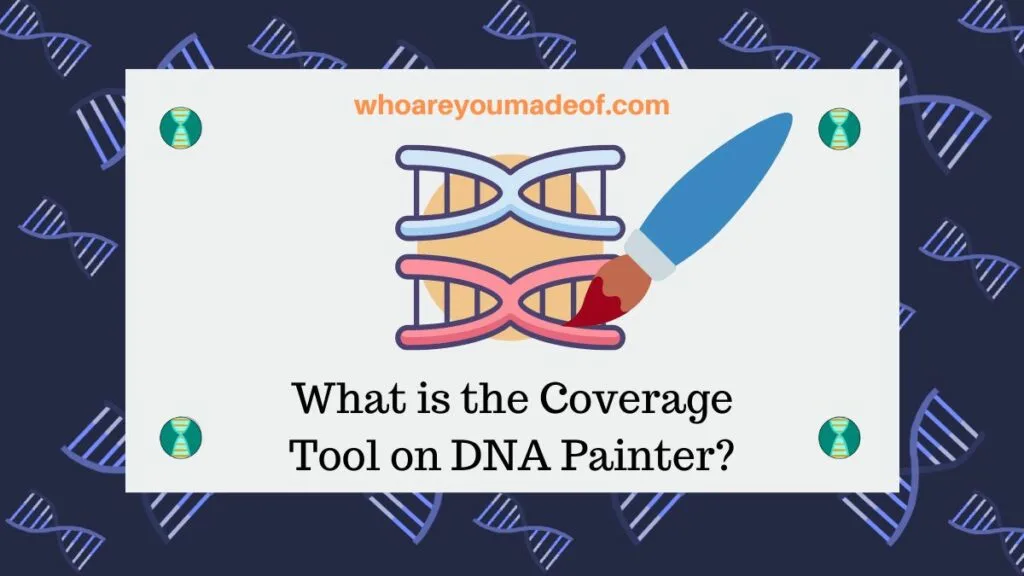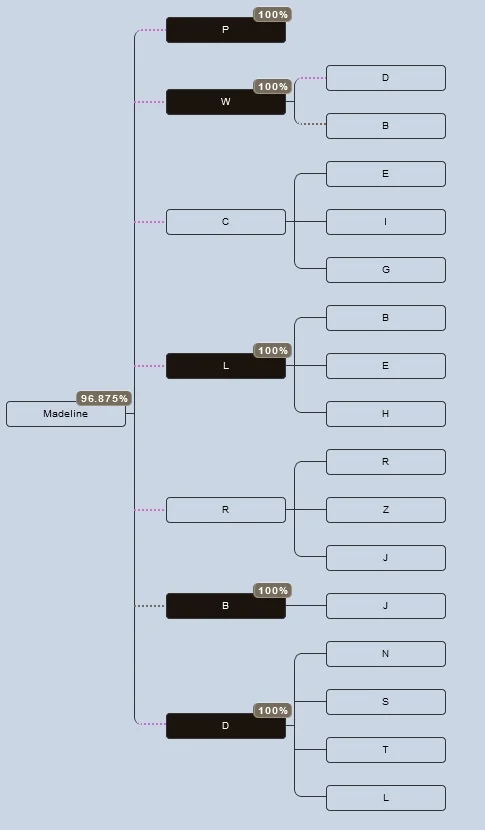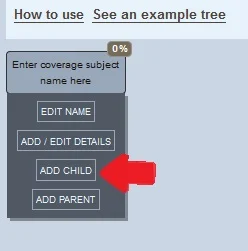Have you heard of the Coverage Tool on DNA Painter? If you are a fan of the site, you are definitely going to want to learn about this helpful new feature.
If you have been into researching your DNA results for a while, you probably know that it is beneficial to have other relatives test. Asking our relatives to take DNA tests can help us discover new ethnicity regions, but it can also allow us to find genetic relatives that don’t show up on our DNA match lists.

The reason that our relatives have DNA match lists that are not identical to ours is due to the way that DNA is inherited. We only inherit a randomly selected portion of any given ancestor’s DNA, and our family members will have received DNA from that ancestor that we didn’t get.
Even two full siblings will not share 100% of their DNA, and they won’t have inherited 100% of either of their parents’ DNA.
How can we get the most complete information about our ancestors’ genomes when they are not available to take a DNA test?
Solving the mystery about how much of a particular ancestor’s DNA is represented in our DNA results, and collectively through a group of results from a number of descendants, can help us figure out whether more testing should be done, and who we could ask to test.
This is where DNA Painter comes in the picture to help us with their new Coverage Tool. “Coverage”, in this case, means the portion of our ancestor’s genome that has been passed down to descendants who have taken a DNA test.
How does the Coverage Tool work?
The DNA Painter Coverage Tool can help us estimate the percentage of a person’s DNA that has been passed down to any number of living descendants who have tested their DNA. It works by using probabilities involving DNA inheritance patterns in order to calculate how much of a person’s overall genome was likely inherited by a group of descendants.
For example, I know that my mother only inherited 50% of my maternal grandmother’s DNA. Each of her siblings inherited 50% of my grandmother’s DNA, too, but a different 50%.
Some of the DNA that my mother and her siblings got from my grandmother is the same, but a lot of it is different. As an example for this article, I decided to use the tool to see how much of my grandmother’s DNA is likely represented in the DNA testing results of my mother and her siblings who have also tested.

It is important to note that we do not have to have access to the DNA results of the people who have tested in order to run the tool. Instead, we only need to know that they did take a DNA test.
When I ran the tool for my grandmother and her descendants, I found that 96.9% of her DNA is probably available for testing and interpretation through DNA results. This is probably because five of her seven children have tested their DNA.
Out of curiosity, I marked all of her seven children as having tested and the percentage of coverage increased to 99.2%. It’s hard to get seven siblings to agree to take a DNA test, so I will probably have to be satisfied with the still very good 96.9% currently available.
What can you learn from the Coverage Tool?
As you know, the Coverage Tool provides us with a percentage estimate of how much of our ancestor’s genome is probably available through the DNA test results of their descendants who have taken DNA tests. However, it also gives us suggestions as to who we might ask to take a test.

The image above contains two testing suggestions for getting a more complete vision of my grandmother’s genome. However, you might notice that the tool estimates that my aunt and uncle
“C” and “R” could test and increase the percentage by only 1.6%.
Because my mom had so many siblings and several of them have taken tests, my grandmother’s genome is fairly well-represented between all of their DNA results. This means that their combined list of DNA relatives likely includes almost everyone in the database that could possibly show up as a match.
How to use the tool
The first step is to create a free DNA Painter account, and then navigate to the Coverage Tool page. Once you have completed these steps, you can quickly upload a family tree and choose the ancestor for whom you would like to estimate coverage.
Upload a tree to DNA Painter
You can upload, or “Load” a Gedcom file, such as one that you have downloaded from your Ancestry account. Most family tree websites and software programs allow you to export your tree in the Gedcom format.

Alternatively, you can create a simple little tree with the basic members right on the Coverage Tool page. To do this, start by clicking the “Enter coverage subject name here” box, and add the name of the ancestor you are analyzing.
Then, you can hover over their name and choose to “add child” as necessary. Add all of the children, grandchildren, etc, as needed until all of the relevant people are added to the tree.
Choose the “coverage subject”
If you uploaded a family tree in the Gedcom format, you can click on the “Enter coverage subject name here” box and begin typing your ancestor’s name. When their name pops up, select their name.
All of their descendants that you have in your Gedcom file should automatically appear in the Coverage Tool page. If you need to add anyone, you can do it manually by hovering over their name and selecting to add a child, etc.

Select the descendants in the tree who have tested their DNA
The final step is to select all of the descendants in the tree who have tested their DNA. This is done by hovering over the person’s name in the tree and choosing “Mark as tested”.
It is important to make sure that we mark everyone that has taken a DNA test as “tested”, and that we have everyone added to the tree correctly. This means that it is crucial to have everyone in the correct generation, since DNA inheritance percentages change based on the number of generations someone is descended from a particular ancestor.
Check the results
Once the tree is added and the descendants who have tested are marked, you can scroll up to see the percentage of your ancestor’s genome that is “covered” through the DNA results of the current members of the family who have tested.
You will see recommendations at the top of the page for “next tester suggestion”, which will give you ideas as to which relatives who have not tested would provide the most information about your ancestor’s genome that is not currently covered in the existing tests.
What if the coverage of the ancestor is low?
If your ancestor’s genome coverage percentage is low, this is an opportunity to ask additional relatives to test. If they have other children, grandchildren, or great-grandchildren, who have not already taken DNA tests, you can consider asking them to take a DNA test in order to help you with your family history and DNA research.
Is it possible to have access to all of your ancestor’s DNA?
While we can’t test the actual DNA of most of our ancestors, we can learn a lot about them through analyzing the DNA that they passed down to us. As you now know, if your ancestor has many descendants who have done DNA tests, there may be a fairly “complete” collection of DNA results that would be almost equivalent to having access to their DNA.
In order to really have access to all of this DNA data contained within the results of the descendants of our ancestors, we would need to have access to all of their DNA results. Ideally, they would all test at the same DNA testing company (for simplicity’s sake, if nothing else).
Depending on how far back our “target” ancestor is, it might be unlikely that all of our relatives give us access to their results. We might be more distantly related to many of them, after all.
Fret not, however. With the advent of some more advanced DNA collection techniques (such as getting DNA from hair!) and other developments, we might be able to find other ways to access a more complete picture of our ancestor’s genome.
Furthermore, even a fairly low percentage of coverage among, for example, a collection of first cousins, will provide good coverage for a grandparent or great-grandparent’s genome. The number of DNA matches and resulting data collected from analyzing these matches will keep us busy for a lifetime.
Conclusion
I hope this post has helped you understand more about the DNA Painter Coverage Tool and that you get the chance to check it out soon. If you have any questions about something I mentioned here, be sure to leave a comment in the discussion below.
Thanks for reading today!
